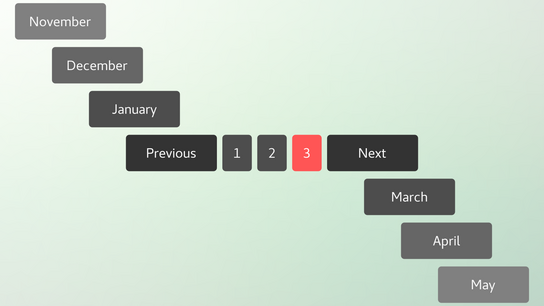Many blog publishing platforms will generate yearly or monthly archive pages that lists the posts published in that period. However, most platforms creates dated archive pages as isolated islands and navigational dead-ends with no obvious path forward for visitors.
You’ll find two links near the bottom of most date-based archive page: “Next page” and “Previous page” when there are enough published posts to allow for pagination. However, these links only take you between pages within the given time period. You can provide a better user-experience and improve bot crawling and content discovery by chain-linking the ends of your archive pages to each other.
WordPress has two primary chronological archives: the main index (the front page) and the yearly archives (including the per-month and per-day sub-archives). The main index lists every published post as one continuous list. You navigate the list using the next-and-previous pager links at the bottom of each page. Depending on the sort order, these links take you from newer to older posts offset from the previous page. Using the pager buttons on the main index, you can navigate through every post until you reach the first one ever published and there aren’t any more pages.
The individual yearly and monthly archives follow each other chronologically just like the main index. However, each of these archives are dead-ends when it comes to link-navigation. By default, the 2018 archive only includes the posts from that year sorted chronologically. The pager buttons won’t suggest you go backwards to the 2017 archive or continue forward to the 2019 archive. You’re left stranded on the 2018 archive with no suggestions for where go to next.
A decade ago, some websites would include a calendar widget and let people explore different date-based archives by clicking around on a calendar. This was more common when more people used larger screens that allowed for a massive site-wide sidebar next to the content on every page. A calendar is also a complex user interface that force visitors to make a decision about where to go next.
The default next/previous pager buttons gives visitors the option to just continue browsing the archive in the direction they were already going.
Linking up the dated archive pages to eachother may sound like an obvious thing to do but as far as I’m aware, only Blogger.com will do this by default. Other content management systems, many created in the era when the sidebar ruled all of web design, just haven’t bother with linking up their archive pages to each other.
I’ve added this capability to my own WordPress instance (as you can see on the above archive pages). Unsurprisingly, this change lead to more page-views among people who’re exploring my blog through the archive pages. It also lead to increased search engine indexing of these pages.
I’ve found some WordPress plugins and themes that have tried to do link up disparate archive pages by subtracting and adding one to the current month or year. This can lead to “navigational hazards” as they sometimes blindly link to months or years where there were no posts; creating 404 Not Founds and empty archive pages. It only takes a tiny extra effort to make sure that you only link to the next or previous page that have posts on them.
You can apply similar solutions for other types of archive pages such as tag/topic and category archives. Try to provide good solutions for where a visitor may want to go next when they’ve reached the last page in a topic archive. You could suggest they go back to the front page or to a list of trending posts. Perhaps branch out to other related tags. There are many possible options here and the right choice will be up to how you’ve organized your website.
